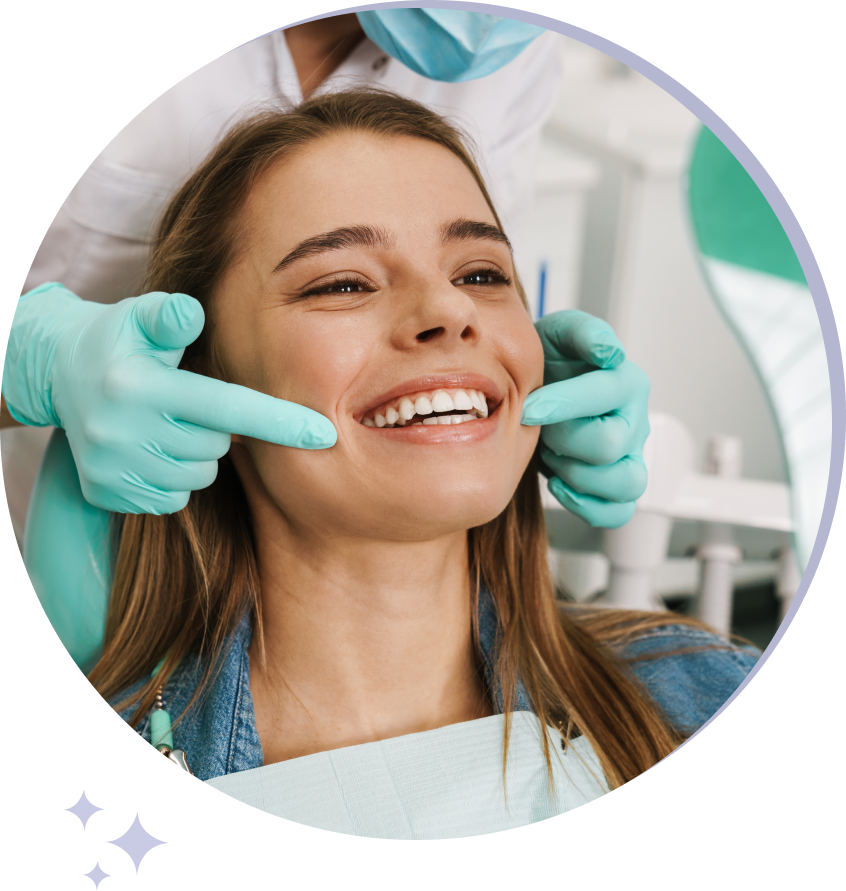
Treatment of Impacted Canines
Common problems with impacted third-molar (wisdom) teeth develop when these teeth get stuck in the back of the jaw, irritation, pain, and frequent infections. There is no functional need for wisdom teeth, and extraction is the best solution to avoid future problems with an impacted wisdom tooth.
The cuspid teeth are powerful biting teeth that play an important role in your bite. They have the longest roots of any human teeth. When the jaw closes they are the first teeth to touch, with the purpose of guiding teeth into a proper bite.
The maxillary cuspid teeth normally erupt into place by age 13, closing any existing gaps. When a cuspid tooth becomes impacted, we prefer to help it erupt into the proper position in the dental arch.
Early detection and treatment is the key to success.
Your child's dentist will count the adult teeth at age seven to determine if all teeth have erupted. If adult teeth are missing, a panoramic x-ray will determine the cause. The impacted eye tooth will not erupt by natural forces.
Treating involves an orthodontist placing braces to create space and encourage eruption of the adult tooth. Treatment may require an oral surgeon to extract baby teeth or any adult teeth blocking the eruption of the important eyeteeth. The oral surgeon will remove extra teeth or growths blocking the eruption of any adult teeth.
Once the surgeon has cleared a path the tooth will erupt with nature's help by age 10-12. The longer a tooth is left impacted the less chance of eruption without help by age 13-14. And by age 40, teeth become fused into position and the only solution is extraction of the impacted tooth.


What happens when the eyetooth does not erupt?
The orthodontist slowly moves teeth to create space in the dental arch. When space is ready the oral surgeon will expose the impacted tooth and applies a bracket.
The surgeon lifts the gum to expose the hidden tooth in a simple surgical procedure performed in the office. A bracket is cemented to the exposed tooth. After healing for one to fourteen days, the orthodontist will attach a rubber band that gently pulls the impacted tooth into position over time.
Treating any impacted tooth in the mouth uses these basic principles. Anterior teeth (incisors and cuspids) and the bicuspids are small with single roots. They are easily treated and erupt more readily than the posterior molar teeth. The molar teeth are much bigger with multiple roots making them more challenging to correct.
Managing a minor surgical procedure and moving the impacted tooth.
For most patients, laughing gas and local anesthesia are sufficient. IV sedation can be requested but is not necessary for this procedure.
You can expect discomfort and minor bleeding following the procedure for a day or two. Ice; Tylenol or Advil adequately manage any pain and swelling. We recommend a soft, bland diet at first, but you may resume a regular diet as soon as you feel comfortable chewing. Avoid sharp foods, like crackers and chips.
In seven to ten days you will see your dentist who will evaluate the healing process and ensure you maintain good oral hygiene. Within 14 days the orthodontist will get the tooth moving by applying the proper rubber bands to the bracket on the impacted tooth, that gently over time move the tooth into the space.



